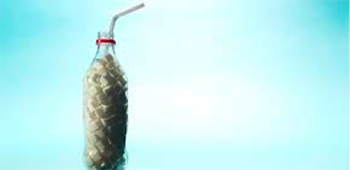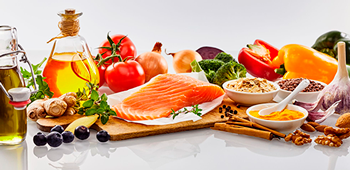
A person’s relationship with food can be tricky, especially with all the non-reliable information that’s constantly shared on social media or among one’s family and friends. Diet culture, which is defined as “the belief that appearance and body shape are more important than physical, psychological, and general well-being”, has also become pervasive in groups that span age, gender, and economic status. This type of culture has made people believe that eating less increases your social capital by being thinner and fitting into harmful beauty standards.
Of course, not all diets are bad and some are extremely helpful when you’re trying to reach a healthy weight by either decreasing or increasing your calorie intake. Following fad diets that are not backed up by dietitians can lead to some really unhealthy eating habits, like skipping meals, neglecting important food groups, and avoiding anything that’s not considered “good”, such as snacks in between meals.
Snacking consists in eating small portions of food throughout the day and when done right, it can prove beneficial to your health.
Many of the patients that come to LIMARP® are looking to improve their quality of life and this includes making significant changes to their eating habits, as well as their physical activity and mental health. Our team, led by Dr. Liza María Pompa González, is made up of qualified specialists that work together to provide you with the best treatment possible. This means that a dietitian will go over your medical history, as well as your needs and expectations, to create a healthy diet plan just for you.
This article contains a few examples of the healthy snacks your dietitian may include in your new health plan, as well as more information on why healthy snacking is important and what to look out for when you’re looking for something to treat yourself. If you’re allergic to any of the ingredients or don’t eat certain types of food, like animal-based products, contact your dietitian so they can suggest replacements or supplements, if needed.
So, why is snacking important?
Aside from not ignoring your body’s hunger cues, studies[1] have shown that increasing your meal frequency “may help manage hunger and improve blood sugar regulation”. When we talk about snacking, we’re referencing food that is actually healthy for you because it contains the necessary nutrients to satisfy your hunger. There are a lot of processed snacks that manufacturers label as “low-calorie”, “light”, or “natural”, but a quick look at the food label can confirm that many of these products are high in added sugar and saturated fat.
While eating a bag of chips or a donut every once in a while is not bad, eating them on a daily basis can be detrimental to your health and slow down your weight loss journey.
There are many healthy alternatives to these snacks that can be found on the Internet or provided by your dietitian. What’s important is that the ingredients are healthy and that the portions don’t exceed what was established in your diet plan. Make sure that your snacks contain protein, fiber, and healthy fats that can help your metabolism and ensure your body has enough energy to function properly[2].
Another study concluded that “snack foods have the potential to contribute valuable nutrients to the daily diet and that they have the potential to contribute to satiety, with higher-protein snack foods having the strongest effect”[3]. It’s important that you keep this information in mind when you overthink if you should snack or not, and to consider that eating when you’re hungry can actually help you develop a healthy relationship with food.
The following examples of healthy snacks are just some of the options you can add to your daily diet to improve your eating habits and help you reach your weight loss goals.
- Quesadillas
This snack is fast and easy to make because it only consists of corn tortillas and panela or oaxaca cheese. Each quesadilla contains only 100 calories and 1.3 grams of saturated fats. If you don’t eat dairy, you can replace it with vegan cheese.
- Popcorn
Some brands of microwave popcorn offer six portions of 100 calories each, but we also recommend air popping the corn kernel if you’re looking for a more natural snack. You can do this on a stove or with an air popping machine.
- Ricotta Cheese
Ricotta is a great source of lean protein and eating half a cup of 14 grams can help you sate your hunger for a long period of time. There are vegan alternatives to this snack as well, which can be found in your local market.
- Almonds
Almonds are a great snack because they’re high in fiber and protein, you can also eat up to 14 of them and won’t be even consuming 100 calories. You can mix them with other nuts and dried fruit to get a truly savory snack.
- Baked Apples
Apples alone make a great snack because they are rich vitamins, fiber, and minerals. You can even bake them with a touch of cinnamon to get that sweet apple pie flavor minus the extra calories.
- Cranberry Smoothie
A smoothie is a delicious way of obtaining calcium and antioxidants in a single snack. Mix ⅓ of a cup of low-fat greek yogurt with ⅔ of frozen cranberries for a fresh and sweet treat.
- Frozen Mango Cubes
This snack is a great source of fiber and β-Carotene, aside from being a sweet treat. A cube equals ¾ of a cup that only contains 90 calories and provides 60% of the recommended daily intake of vitamin C.
- Yogurt with Sunflower Seeds
For this snack, add a spoonful of sunflower seeds to half a cup of natural skimmed yogurt. The sunflower seeds only add 19 calories to the protein filled yogurt.
- Half of a Baked Potato with Salsa
A baked potato is a low-calorie, simple snack and a great source of vitamin C. Half of it contains only 80 calories and the skin is full of nutrients; for extra flavor, you can add a spoonful of salsa.
- Frozen Banana Popsicles
If you’re looking for creative ways to add fruit to your diet, a frozen banana is the perfect snack. Cut the banana into pieces and stick a wooden stick in them; then, cover half of each piece with skimmed yogurt. Put it in the freezer and you’ll soon have a delicious snack that’s less than 80 calories.
Contact Us to Learn More
If you want to improve your eating habits and are looking for a specialized diet plan, schedule an appointment with one of our doctors. We can help determine the right treatment for you. Contact us online anytime or give us a call at (619) 373-0229.
References
- [1] Yildiran H, Mercanligil SM. Does increasing meal frequency improve weight loss and some biochemical parameters in overweight/obese females? Nutr Hosp. 2019 Mar 7;36(1):66-72. English. doi: 10.20960/nh.2191. PMID: 30836763.
- [2] Dreher ML. Whole Fruits and Fruit Fiber Emerging Health Effects. Nutrients. 2018 Nov 28;10(12):1833. doi: 10.3390/nu10121833. PMID: 30487459; PMCID: PMC6315720.
- [3] Njike VY, Smith TM, Shuval O, Shuval K, Edshteyn I, Kalantari V, Yaroch AL. Snack Food, Satiety, and Weight. Adv Nutr. 2016 Sep 15;7(5):866-78. doi: 10.3945/an.115.009340. PMID: 27633103; PMCID: PMC5015032.


